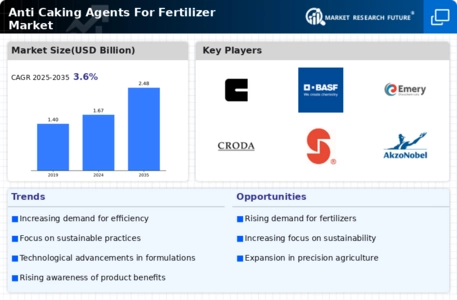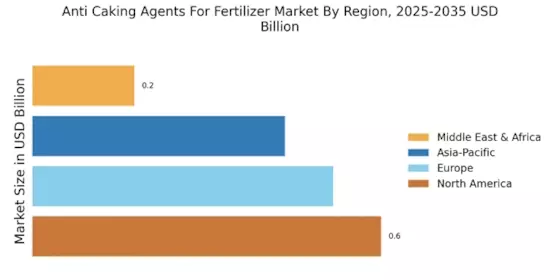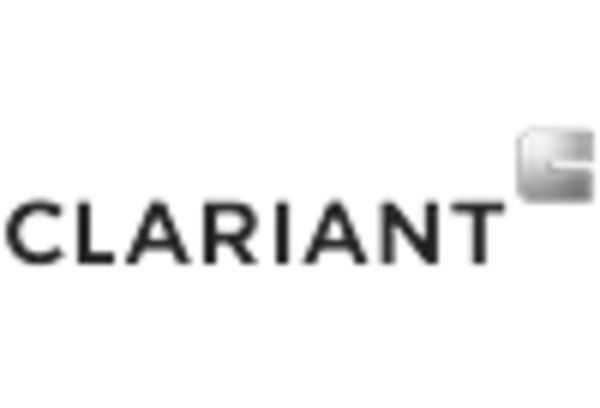Regulatory Compliance
Regulatory frameworks aimed at ensuring the safety and efficacy of agricultural inputs are influencing the Anti Caking Agents For Fertilizer Market. Governments are increasingly implementing stringent regulations regarding the use of chemicals in fertilizers, which necessitates the incorporation of safe and effective anti caking agents. Compliance with these regulations not only enhances product safety but also boosts consumer confidence in fertilizers. As manufacturers strive to meet these regulatory standards, the demand for high-quality anti caking agents is likely to increase. This trend may lead to a more competitive market landscape, where companies that prioritize compliance and safety gain a significant advantage.
Technological Innovations
Technological advancements in the formulation and application of anti caking agents are driving growth in the Anti Caking Agents For Fertilizer Market. Innovations such as nanotechnology and advanced coating techniques are enhancing the effectiveness of these agents, leading to improved performance in various environmental conditions. The introduction of smart fertilizers, which incorporate anti caking agents, is also gaining traction. These products are designed to release nutrients more efficiently, thereby increasing crop yields. The market is witnessing a surge in research and development activities aimed at creating more effective and tailored anti caking solutions, which could potentially reshape the industry landscape.
Sustainability Initiatives
The increasing emphasis on sustainable agricultural practices is a key driver for the Anti Caking Agents For Fertilizer Market. As farmers and manufacturers seek to minimize environmental impact, the demand for eco-friendly anti caking agents is likely to rise. These agents not only enhance the flowability of fertilizers but also contribute to reducing waste and improving nutrient delivery. The market for sustainable fertilizers is projected to grow significantly, with estimates suggesting a compound annual growth rate of over 10% in the coming years. This trend indicates a shift towards more responsible farming practices, which could further bolster the demand for anti caking agents that align with sustainability goals.
Rising Agricultural Productivity
The Anti Caking Agents For Fertilizer Industry. As the world population continues to grow, the demand for food is escalating, prompting farmers to adopt fertilizers that enhance crop yields. Anti caking agents play a crucial role in ensuring that fertilizers remain free-flowing and easy to apply, which is essential for maximizing efficiency in agricultural practices. Reports indicate that the fertilizer market is expected to reach a valuation of over 200 billion USD by 2026, with anti caking agents being a vital component in meeting this demand. This trend underscores the importance of these agents in supporting global food security.
Market Expansion in Developing Regions
The expansion of agricultural activities in developing regions is a notable driver for the Anti Caking Agents For Fertilizer Market. As economies in these areas grow, there is a rising need for fertilizers to support agricultural development. Anti caking agents are essential for ensuring that fertilizers can be stored and applied effectively, which is particularly important in regions with less developed infrastructure. The increasing investment in agriculture in these regions is expected to drive the demand for fertilizers, and consequently, for anti caking agents. Market analysts predict that this trend will lead to a substantial increase in the consumption of anti caking agents in the coming years, as farmers seek to optimize their fertilizer use.


















Leave a Comment